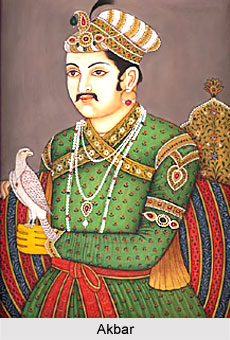 Culture under Mughal Dynasty can be characterized by the unproductive nature of the enterprises undertaken by the state, absence of a middle class, poverty of the masses, lack of appreciation by the rulers of the importance of foreign trade and the estrangement between the highly cultured aristocracy and the untutored masses.
Culture under Mughal Dynasty can be characterized by the unproductive nature of the enterprises undertaken by the state, absence of a middle class, poverty of the masses, lack of appreciation by the rulers of the importance of foreign trade and the estrangement between the highly cultured aristocracy and the untutored masses.
Religion under Mughal Dynasty
Mughal King Akbar was the secular and religious head of the Indian. A more tolerant attitude towards the Hindus was seen during this age. The religious class consisted of the theologians, the ascetics, the Sayyids, the Pirs and their descendants. So far as the non-official religious movements are concerned Sufism had developed among the Muslims and the Bhakti movement had developed among the Hindus.
Literature under Mughal Dynasty
The period witnessed the introduction and development of Persian literature; it saw the rise of Vernacular literature and also the foundation and growth of secular writings in prose. Indian culture was enriched by the growth of historical form of literature which was a Muslim contribution. They extended their patronage to men of learning. India became a centre of Persian literature.
Dancing and Music under Mughal Dynasty
Traditional Dance continued in this period both in the north and in the south. Kathak was a new dance that had developed during this period. But the art was not pursued purely from an aesthetic point of view. Sufism with its religious fervour expressed itself in dance and music that resulted in the Muslims appreciating the music. Khusro was both a singer and a-dancer.
Architecture under Mughal Dynasty
The Muslim architecture of India is derived from the ancient vaulted architecture of Mesopotamia. Muslim architecture also believed in ornamental decoration. The prayer chamber of the mosque was spacious; it was light and open and was based on arches, vaults and domes. The Mughal art was more influenced by the Hindu conceptions. Akbar`s strong liking for Hindu ways induced him to revert to Hindu styles of decoration. An example can be sited in this regard the Jahangiri Mahal. The Agra Fort of Akbar and the buildings in Fatehpur Sikri display originality and spontaneity of a new style. It can be safely asserted that in design, in the use of materials, in delicacy and grace, in ornamentation and carving the Mughal buildings were radically different from those erected by the Sultans and had more of the Persian and the Hindu elements in them than the former buildings.






































